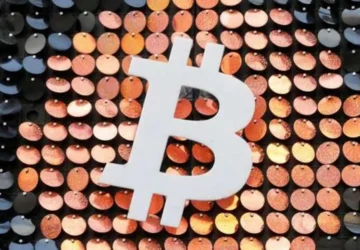Cryptoverse: Digital coins lure inflation-weary Argentines and Turks

Can volatile cryptocurrencies be safe havens? In some places, like Argentina and Turkey, people have sought refuge in digital currencies due to soaring prices.
According to research firm GWI, the ownership of digital currency in Turkey is the highest in world with 27.1%. Argentina follows at 23.5%. This is well above the global crypto ownership rate estimated as 11.9%.
Turkey and Argentina share a lot in common, besides being leaders in the crypto industry. High inflation has caused currencies to collapse and capital controls have been implemented to prevent locals from withdrawing money. Turkey’s annual rate of inflation in March was 50.51%, Argentina’s even higher.
Both the lira (the Turkish currency) and peso (the Spanish currency) have fallen to record lows. The black market exchange rate for Argentina’s peso is around 464 dollars per peso, which is more than twice the official rate of 222.
Stablecoins like USD Coin (USDC), and Tether (USDT) have been a major part of safe-haven purchases. These crypto tokens are pegged to traditional assets such as gold or the U.S. Dollar, offering investors a viable alternative to dollars.
Ehab Zaghloul is the chief research scientist of Tribal Credit, an online payments platform for emerging markets.
They want to hold assets that are pegged to stronger currencies, such as the U.S. dollar. dollar.’
The USDT-Turkish Lira pair’s trading volume reached a multimonth high last weekend, driven by the weakened Turkish currency and the forthcoming landmark presidential and parliament elections, Kaiko analyst Dessislava Aubert stated.
Analysts at K33 Research noted that ‘in general, the adoption of crypto tends to be greater in countries where there are capital restrictions, political instability and financial instability’.
Bitcoin, the most popular and largest cryptocurrency in the world, has risen 72% in value this year to $30,000, which is its highest level in 10 months. However, trading volumes have fallen far below levels last summer, when investors were frightened by a series collapses that culminated in FTX’s demise.
Kaiko data shows that the trading volume for bitcoin spot is highest during U.S. open hours and has not changed much since 2022.
Kaiko stated that regulatory issues facing Binance, a crypto exchange, in the last few months has led to a slight change in derivative trading volumes from Americas towards Asia Pacific.
South Korea’s won is the second most dominant currency after dollars if dollar-to-crypto volumes are excluded.
Analysts at the crypto investment firm Matrixport stated that after a poor fourth quarter of 2022, South Korea’s crypto trading volume is back to its first and second quarters in 2022.
Analysts at Matrixport said that ‘the dominance of altcoins make South Korea an interesting market to analyze’.
This is in stark contrast with other crypto exchanges, where Bitcoin and Ethereum make up the majority of volume.
No related posts.










